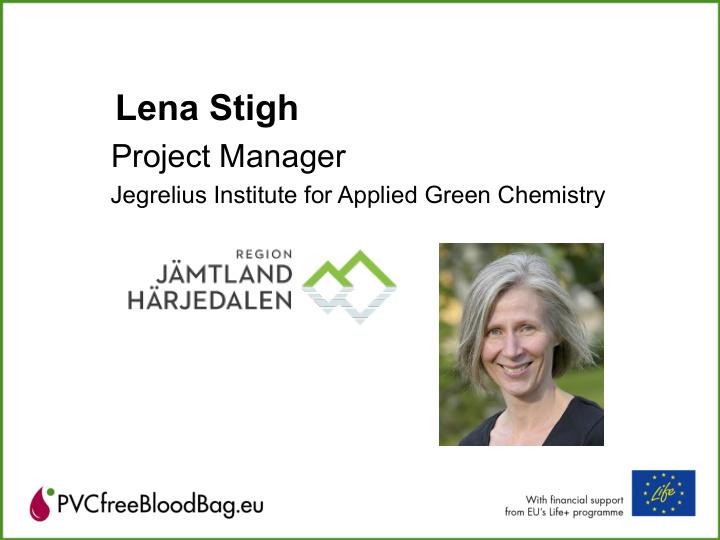



Lena Stigh Project Manager Jegrelius Institute for Applied Green Chemistry
What are the challenges?
Essential product • The blood bag is a life-saving product • Transfusion of blood is a transfer of living blood cells (or plasma) involving potentially immunological effects and effects associated with physiologically active substances. Those effects are considered to pose a significantly higher risk to the patient.
We need to store blood • The red blood cells are stabilized by DEHP causing less hemolysis • International norms; max 0,8% hemolysis
Technical barriers • The blood bag is a complex product • Quality requirements on blood components • High material properties required Centrifugation Sterile sealable tubings Storage at low temperature up to 37 C Compatibility
Economic barriers • “Not profitable for the producers” • Investments and long lead times • Lack of life cycle perspective • A risk of higher initial cost
Lack of clear demand • The incentives for the manufactures to bring new blood bags to the market are not high enough • Legislation not strong enough
How do we overcome these challenges?
Objectives To show that it is possible to produce a PVC-free blood bag that fulfil requirement specification, including CE-labelling To cooperate with European healthcare to disseminate knowledge and increase the demand
How far have we come ?
Next to come • User tests • A non-PVC blood bag tested • Technical Report/Publication • Economic feasibility study • LCA of the new bag • Final Workshops • End of project 30 March 2017
How about increased awareness and demand ?
If a PVC free blood bag were available… Would you buy it?
A bag that… • minimise patient exposure to potentially hazardous substances and thus gives long- term health improvements • gives better working environment for both manufacturers and hospital employees • reduces long-term costs in healthcare due to healthier population
You will find the petition on the website.
Recommend
More recommend